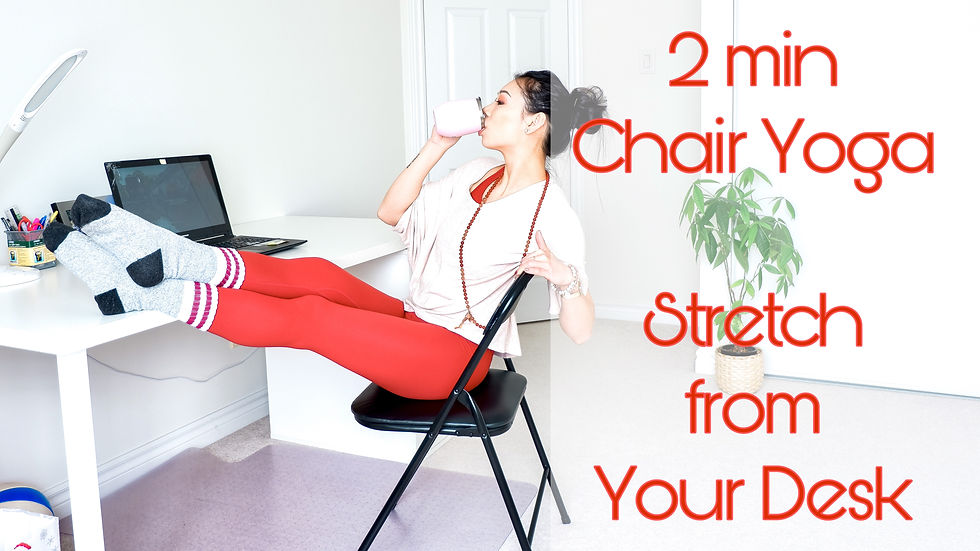Diving into the 8-limbs of yoga - Asana
- Kathie_yogi

- Feb 26, 2020
- 2 min read
What are the 8 limbs of yoga?
The name “8 Limbs” derives from the Sanskrit term Ashtanga: "Astha" meaning eight, and "ang" meaning limb. These "8 limbs" are broken down into the following: Yama (attitudes toward our environment), Niyama (attitudes toward ourselves), Asana (physical postures), Pranayama (restraint or expansion of the breath), Pratyahara (withdrawal of the senses), Dharana (concentration), Dhyana (meditation) and Samadhi (complete integration).
How to you practice 3rd limb, "Asana" - comes from the Sanskrit term meaning "a seat", the physical or the holistic aspect?
Asanas in practice
Probably the most accessible of the 8-limbs. We practice asanas every time we step into a yoga studio, or when we practice at home. However, if we think about Patanjali's purpose for the 8-fold path, it is not simply to master a posture, it is using the physcial practice to guide us in a meaningful and purposeful life.
When I first started practicing yoga, I loved practicing hot yoga, moksha / ashtanga / bikram, was less enthusiastic about hatha, and definitely nothing that involved sitting still! Looking back, I think most people in the 20s would have a similar attitude. Focusing on the physical side rather than the mental (or spiritual) side: doing yoga for flexibility – a very common goal I hear from students. Totally understandable! I was there too. Even through teacher training I dreaded meditation, kundalini and hatha practices. It was near impossible to calm my mind during meditation, and what I thought was an hour of seated meditation … was actually 5min! The only time when I found focus was when I was practicing sun salutations. I noticed that by practicing the same pattern of movements my body had developed a sort of muscle memory that allowed me to focus less on what my body is doing and more on how I was breathing. The more I practiced ashtanga (or practices where there was an element of repetition), the more I found focus and conscience breathing. This over time made me more aware of my breath in my day to day – at the office, at home …etc. That’s when I realized the bigger purpose of practicing asanas.
The asanas serves to help us breathe, and the breath, in turn keeps our mind focused and removes distractions. That’s yoga! My yoga teacher from training once told me people inherently are jittery. Staying still is not a common skill we have especially in our fast-paced world today. The movements are just “distractions” to help us keep our breath flowing, and as a side benefit, they also provide physical benefits.
How to practice Asana (and beyond)?
These days I find I practice yoga with 2 different intentions. Some days I only want the physical practice, other days I want the whole package. The key difference is the mindset and choosing to approach a practice with intension.
While the original 8-limbs path serves to be a guide to a meaningful and purposeful life, we don’t always need to approach it with the holistic view in mind. However, when we practice yoga with the intention of integrating it’s principals beyond the mat, that’s when we can tap into all its benefits for health and well-being: physical, mental, and spiritual.




Comments